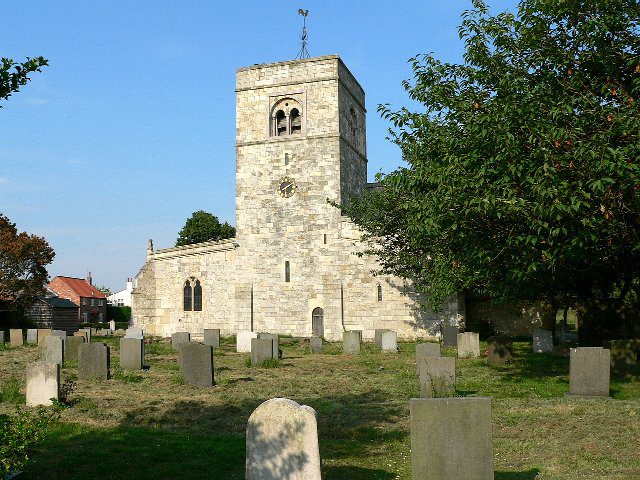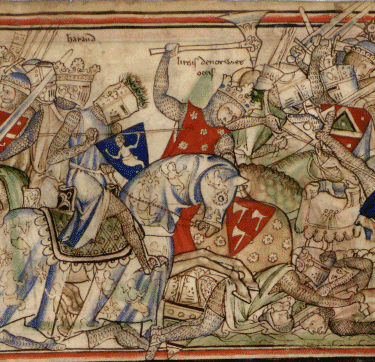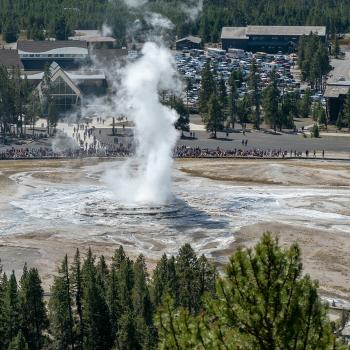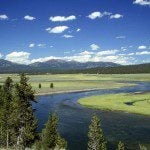
The article to which I link below may suggest some implications for my own family’s history, as well as for the genealogies of more than a few readers of this blog. (It may also have something to suggest about today’s refugee situation and the treatment of immigrants.)
http://www.realclearscience.com/articles/2017/02/25/why_did_danish_vikings_move_to_england.html
My paternal grandfather was from Denmark. He came over to the United States as a baby (or — we’re still not sure about this — was born almost immediately after his parents immigrated). My paternal grandmother left Norway when she was eighteen. So I’m 50% Scandinavian right there. But my maternal ancestry comes from the very areas of Scotland (Ayrshire) and northeastern England (near York) that seem to have been most heavily impacted by Scandinavian raids and settlements. Which means that I may ultimately be more than 50% Scandinavian.
To the extent that we’ve been able to trace them, my Yorkshire ancestors come from the village of Riccall, which was originally the site of an Anglo-Saxon settlement — there is evidence of an original Saxon church on the site of the current St. Mary’s — and a few villages round about it. Riccall sits in the historic East Riding of Yorkshire, about 3.5 miles from Selby, where an important abbey stands, and about 9 miles south of the city of York itself.

Riccall was the site of the base camp of Harald Hardråda — Harald III, King of Norway — in 1066. King Edward the Confessor had died without an heir in January of that year, creating a dispute over the royal succession. Harold Godwinson, usually termed an Anglo-Saxon but also related to King Cnut (or Canute) the Great (d. 1035) –who was the king of Denmark, Norway, and England –was chosen by the Witenagemot and was crowned at Westminster Abbey. Norway’s King Harald, however, contested Harold Godwinson’s coronation and claimed the English throne for himself. Accordingly, he invaded England. He had sailed up the estuary of the River Humber (from which Northumbria takes its name) and landed on the banks of the River Ouse, which is near Riccall. He set up his camp there before his victory over the northern English earls at the Battle of Fulford on 20 September 1066. Just five days later, though, on 25 September 1066, he was defeated and killed by Harold Godwinson at the Battle of Stamford Bridge.
That battle itself, though, proved disastrous for the English King Harold even though he was victorious in it. He had been in southern England, anticipating an invasion from France by William, Duke of Normandy, who was another contender for the English throne. Learning of the Norwegian invasion, though, King Harold headed north at great speed with as many warriors as he could gather, travelling day and night with his best and most dedicated fighters. He made the journey from London to Yorkshire, a distance of about 185 miles, in only four days, which enabled him to take the Norwegians completely by surprise. His army of 5,000 defeated a Norwegian army that is usually put at 6,000 but may have been even larger. However, he suffered heavy casualties (roughly 15% of his soldiers were killed) and the battle distracted him from his necessary defense of England’s south coast at precisely the wrong time, which, thus, left it open to Norman invasion. And the rest, as they say, is history: Force-marching his exhausted and depleted army back down to the south after their victory over the Norwegians at Stamford Bridge, without enough time to recruit more fighters, Harold was defeated by William the Conqueror at the Battle of Hastings on 14 October 1066. And, so, the Normans (who were themselves of Viking origin, the descendants of Norsemen), became the lords of England.
Most “important” historical battles aren’t really all that decisive or pivotal, except in a narrow political and military context. But the Battle of Hastings was of incalculable importance, politically, militarily, and culturally. The imposition of elite Norman French on the Germanic Anglo-Saxon language of the conquered English, for example, created our English language. It’s why English has such a rich and supple vocabulary — with such interesting pairings as Germanic handbook and ghost and their more elevated Latinate synonyms manual and spirit — and is one of the factors that made Chaucer, Milton, and Shakespeare possible.











